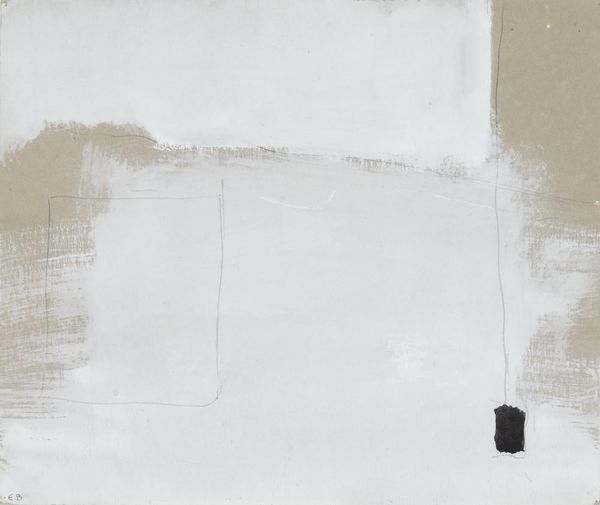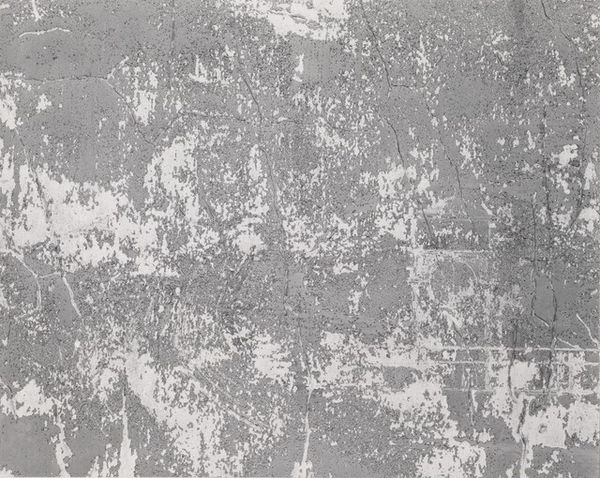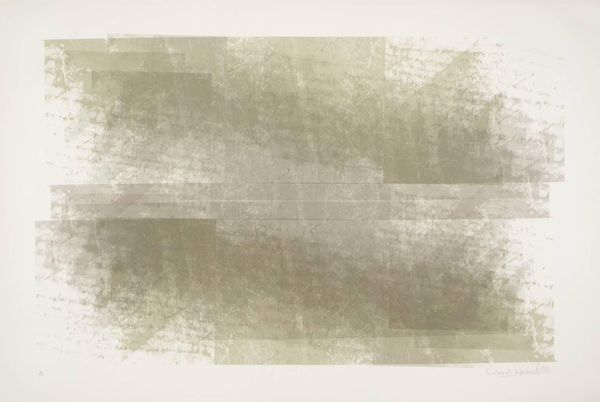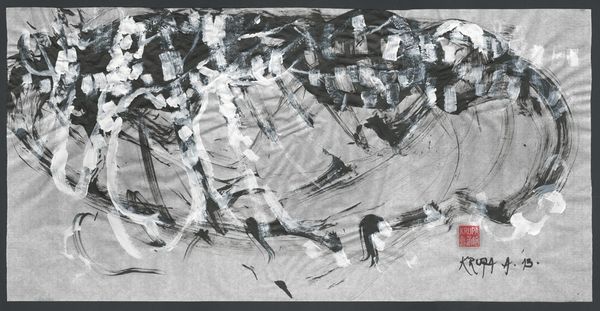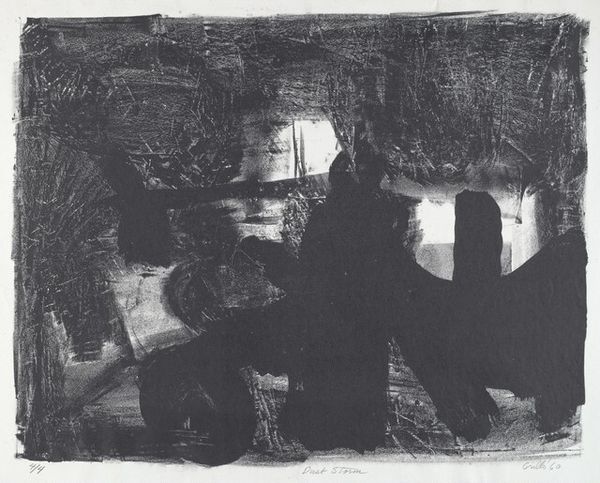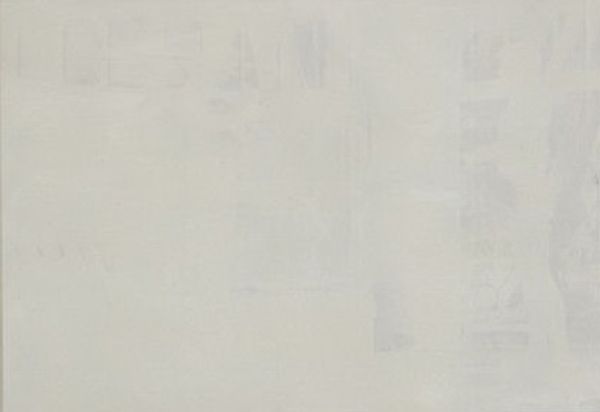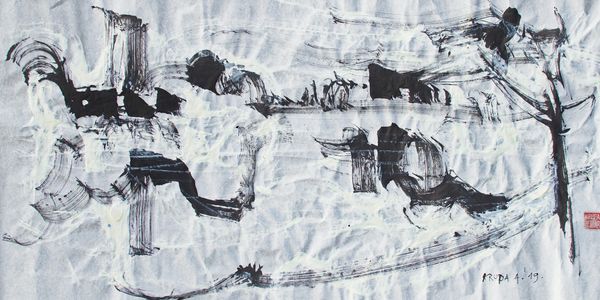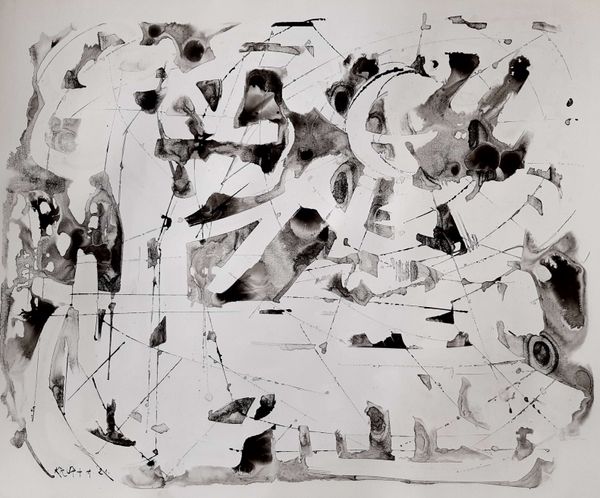
drawing, print, etching, graphite, charcoal
#
drawing
#
cubism
# print
#
etching
#
charcoal drawing
#
figuration
#
geometric
#
line
#
graphite
#
charcoal
#
charcoal
#
graphite
Dimensions: 19 3/16 x 35 in. (48.74 x 88.9 cm) (plate)19 5/8 x 35 5/16 in. (49.85 x 89.69 cm) (sheet)
Copyright: No Copyright - United States
Editor: So, here we have Louis Marcoussis’ “Sur la plage,” created in 1931. It's a charcoal and graphite etching. I’m struck by the stark geometric forms and the incredible use of line to create depth and texture. What is your read on this piece? Curator: This piece presents a compelling exercise in Cubist principles, specifically through its dissection of form and space. Note how Marcoussis fragments the figures and setting, rendering them into an assembly of geometric components. Can you observe how line directs the eye and contributes to a sense of movement? Editor: Yes, I see how the lines are almost like rays, suggesting light or movement across the scene. The contrast between the solid blacks and the fine, almost chaotic lines is really interesting. How does that contrast function? Curator: Indeed. This deliberate juxtaposition creates tension and visual interest. It is a clear statement of formal elements—line, shape, value—creating pictorial space independent of subject matter. The dark areas ground the composition, whilst the frenetic lines destabilize any concrete interpretation of the depicted ‘beach’. Consider also how the interplay of positive and negative space further abstracts the subject. Do you perceive any single focal point in this work? Editor: It's difficult to pinpoint one specific focal point, but my eye keeps being drawn to the cluster of activity in the upper-center section. Everything else almost seems to radiate outwards from there. Curator: Precisely. The work deliberately refuses a clear, singular reading, forcing the viewer to actively engage with the composition. It exemplifies the Cubist strategy of presenting multiple perspectives simultaneously within a two-dimensional plane. The subject is ultimately subjugated to the structure itself. Editor: That makes perfect sense. I didn't think about how the lack of a focal point makes it feel active. It definitely provides a much better understanding of cubism. Curator: And hopefully, you will agree that through close inspection, and with some familiarity of the Cubist theory, we have clarified how Marcoussis used form and line to evoke feeling within the confines of abstraction.
Comments
minneapolisinstituteofart almost 2 years ago
⋮
A few years after moving to Paris in 1903, a young Ludwig Markus met Cubist painters Georges Braque and Pablo Picasso and poet Guillaume Apollinaire. They influenced Markus's style and also his name; it was Apollinaire who suggested he change it to Marcoussis, after a village just south of Paris. After 1930 Marcoussis largely devoted himself to printmaking. More than other Cubists, he evoked a sense of nature and personal feeling in his works, as demonstrated by the intertwined hands below the couple here. The year he made this print, Marcoussis also illustrated a book by Dadaist poet Tristan Tzara. In pencil, the artist inscribed this print to Tzara and his wife, painter Greta Knutson.
Join the conversation
Join millions of artists and users on Artera today and experience the ultimate creative platform.


